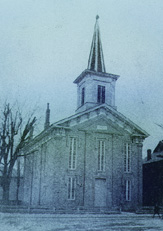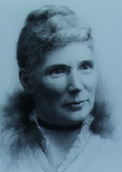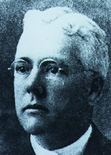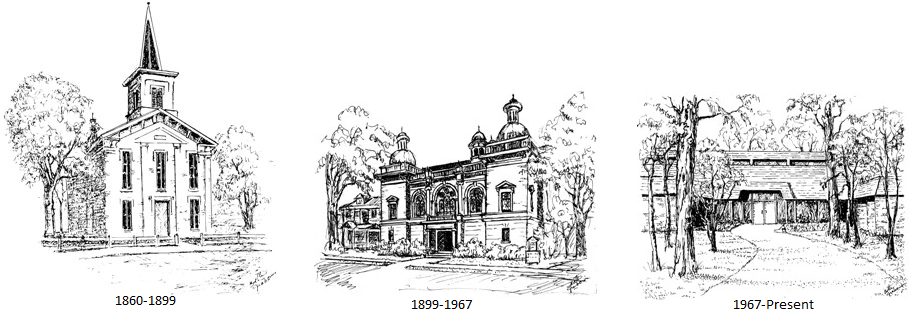A Very Brief History of Unitarian Universalism
The Unitarians and the Universalists were two separate Christian denominations with a long history in the United States, going all the way back to the 1600 and 1700’s. The Unitarians derived their name from being primarily identified theologically as believing in the unity of god, as opposed to the more common Christian doctrine of the trinity. They still believed Jesus was divine and the son of god, just not part of a co-equal trinity. The Universalists believed that everyone was saved, that no one goes to hell. A common Universalist perspective was “God is love.” Both denominations gradually evolved over time towards being less and less creedal – meaning there were fewer and fewer beliefs you had to say you agreed with to be able to become a member. Both denominations were also slowly becoming more theologically similar over time, and finally decided to merge in 1961, forming the Unitarian Universalist Association of Congregations, or UUA for short. Thus Unitarian Universalism in its current form has been around for a little over fifty years.
 Unitarian Universalism clearly emerged out of Christianity – it’s why we still call ourselves church and congregations, it’s why we still have ministers and not rabbis or imams, and it’s why we still sing hymns and have a sermon on Sunday mornings. Since we have congregational polity – meaning there is no hierarchy and each church makes its own decisions – our theology is not uniform across our churches and congregations. A smaller number of our congregations fall on the more Christian side, others are very much secular humanist, and there’s a wide variety in-between. One of the many things that binds us together is our free and responsible search for truth and meaning – for example, we understand and respect that some of our members believe in god (theist), some are unsure (agnostic), some believe there is no god (atheist), and some believe in multiple gods (polytheism, most often our Pagans). To learn more about what we believe, visit the Our Beliefs page.
Unitarian Universalism clearly emerged out of Christianity – it’s why we still call ourselves church and congregations, it’s why we still have ministers and not rabbis or imams, and it’s why we still sing hymns and have a sermon on Sunday mornings. Since we have congregational polity – meaning there is no hierarchy and each church makes its own decisions – our theology is not uniform across our churches and congregations. A smaller number of our congregations fall on the more Christian side, others are very much secular humanist, and there’s a wide variety in-between. One of the many things that binds us together is our free and responsible search for truth and meaning – for example, we understand and respect that some of our members believe in god (theist), some are unsure (agnostic), some believe there is no god (atheist), and some believe in multiple gods (polytheism, most often our Pagans). To learn more about what we believe, visit the Our Beliefs page.
Unitarian Universalism has a long and fascinating history that is worth exploring – this video and this pamphlet from the UUA both offer a more in-depth perspective.
A Brief History of Our Church

A small group of progressive men and women organized the First Universalist Church of Muncie in 1859. They were influenced by Universalist ministers who traveled throughout the Midwest, spreading a liberal message of universal salvation. American Universalism emerged in reaction to Calvinism with its doctrine that at birth some were destined for heaven, others for hell. Universalists believed that God’s nature was love and that all would be saved. In the 19th century, dozens of Universalist congregations formed in Indiana to spread the good news of universal salvation; the UU church of Muncie is one of just three churches in Indiana surviving from that movement.

In 1855 a man named Samuel Watson came to Muncie from Ohio. He was a Universalist who was determined that there be a Universalist church here. He arranged for itinerant preachers who held meetings in the courthouse and people’s homes. But the established churches of Muncie were closed against the Universalists, so in 1859 they organized to build a house of their own, with “a steeple taller than any other church in town.” That church was at the corner of Madison and Jackson, current location of Cintas Linens. Early church members included many Muncie leaders after whom city streets are named: Adam Wolfe, Thomas Kirby, and Alfred Kilgore, to name a few.
When the Ball family arrived in Muncie, four of the five brothers and their wives associated themselves with the Universalist Church.

In 1899 the Ball family encouraged a Universalist woman minister, Rev. Margaret Brennan, to come to Muncie. (Universalists began ordaining women to the professional ministry in 1863.) Under Rev. Brennan’s leadership, the Universalists enlarged and completely remodeled their simple brick church. It became a grand and elegant church with windows of American cathedral glass, antique oak woodwork, and an auditorium that could seat 400 people.
Rev. Harry Adams Hersey served as minister of the church from 1919-1923. During his short tenure, he established the first annual church budget and purchased 20,000 picture postcards, at a cost of $100, which were sold to supplement the church’s income. Rev. Hersey’s weekly sermons were printed in the Muncie newspaper. Rev. Hersey is widely remembered for his open opposition to the Ku Klux Klan, then in its heyday in Indiana. He denounced the Klan from the pulpit and warned church school children of its dangers. In his written memoirs, he stated that he and only one other minister in Muncie, a Baptist, “came out openly and strongly against the Klan.” His outspokenness on that and other issues offended many and led to his resignation.

By the 1960s, the downtown building had badly deteriorated. Following several years of deliberation, the congregation decided in the 1960’s to move away from the downtown building. A new church was built in a wooded setting in northwest Muncie, where the majority of church members lived. The beautiful new building, dedicated in 1967, was modern in style, reflecting the values of a new generation and the evolving religious views of the denomination.
The name of the church has changed several times since its founding. The original name, First Universalist Church, was changed to St. John’s Universalist Church in 1913, and it retained that name until 1955. After the national merger of the Universalists with the Unitarians in 1961, the church became the Unitarian Universalist Church of Muncie.
Our Church Buildings Through History – Ink Drawings by Bette Graham, created for our 150th Anniversary celebration in 2008-09.
